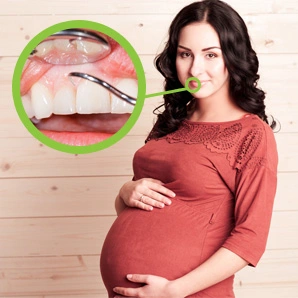Healthy Mouth, Healthy Mom, Healthy Baby: Optimal Oral Health Care Before, During and After Pregnancy
COURSE NUMBER: 505
Credit Hours:
1 Hour(s)
SHARE
This continuing education course will review the current scientific evidence about the association between oral health and pregnancy outcomes and to evaluate best practices for optimal dental treatment of women before, during, and following...
(Use this feature to create assignments for your students and staff.)
Overview
This continuing education course will review the current scientific evidence about the association between oral health and pregnancy outcomes and to evaluate best practices for optimal dental treatment of women before, during, and following their pregnancies.
In a 2009 national survey of 351 OB/GYNs, 77% reported that some of their patients had been declined dental services due to pregnancy.1 Additionally, many medical care providers fail to or are unable to accurately check pregnant patients for dental problems and refer them for dental care. At least 40% of pregnant women experience some form of periodontal disease, including gingivitis, periodontitis, or pyogenic granuloma (“pregnancy tumor”).1-3 Additionally, increased carbohydrate consumption and acid exposure secondary to pregnancy related “morning sickness” can increase patients’ susceptibility to dental caries.
It is currently the recommendation of the National Maternal and Child Health Resource center at Georgetown University that pregnant patients or those seeking to become pregnant who have not seen a dentist in at least six months should be referred for dental care4 and the American College of Obstetricians and Gynecologists began advising OB/GYNs to check patients for oral health issues at their first prenatal visit and make the appropriate referrals.4 Furthermore, routine dental care such as dental cleanings and the administration of local anesthetic medication during pregnancy have not been shown to change rates of miscarriage or birth defects.4,5 Dental radiographs are also safe, although it has been suggested they should be limited for use in a dental emergency or if there is a need to diagnose a dental problem and the patient should be appropriately protected with a lead drape.4,5
This course seeks to discuss the high incidence and etiologies of periodontal diseases during pregnancy and to enable dental practitioners to better identify disease and promote optimal oral health in patients before and during pregnancy.
Intended Audience:
Dental Assistants, Dental Hygiene Students, Dental Hygienists, Dental Students, Dentists, Dental Assistant Students
Date Course Online:
Jun 5, 2016
Last Revision Date:
Dec 31, 2000
Course Expiration Date:
Jun 4, 2019
Cost:
Free
Method:
Self-instructional
AGD Subject Code(s):
Learning Objectives
Upon completion of this course, the dental professional should be able to:
Understand the current scientific literature about the association between oral health and pregnancy outcomes and discuss the interactions between these two conditions with patients.Recognize, assess, treat and prevent oral conditions associated with pregnancy.Evaluate patients’ risk factors and oral home care practices during pregnancy based upon individualized patient needs.Understand the risks and benefits regarding routine, elective, and emergent dental care during pregnancy.Discuss with patients the risk factors associated with pregnancy gingivitis and the importance of a healthy mouth in overall maternal and fetal health during pregnancy.Use effective behavioral management techniques to improve oral hygiene of patients before, during, and after pregnancy.Discuss with interdisciplinary colleagues the importance of and effective methods for seeking dental care during pregnancy.
Disclaimers
Participants must always be aware of the hazards of using limited knowledge in integrating new techniques or procedures into their practice. Only sound evidence-based dentistry should be used in patient therapy. Note: Registration is required to take test.
Submission Information
Recognition
Approved PACE Program Provider
THE PROCTER & GAMBLE COMPANY
Nationally Approved PACE Program Provider for FAGD/MAGD credit.
Approval does not imply acceptance by any regulatory authority or AGD endorsement.
8/1/2021 to 7/31/2027
Provider ID# 211886
(Use this feature to create assignments for your students and staff.)



